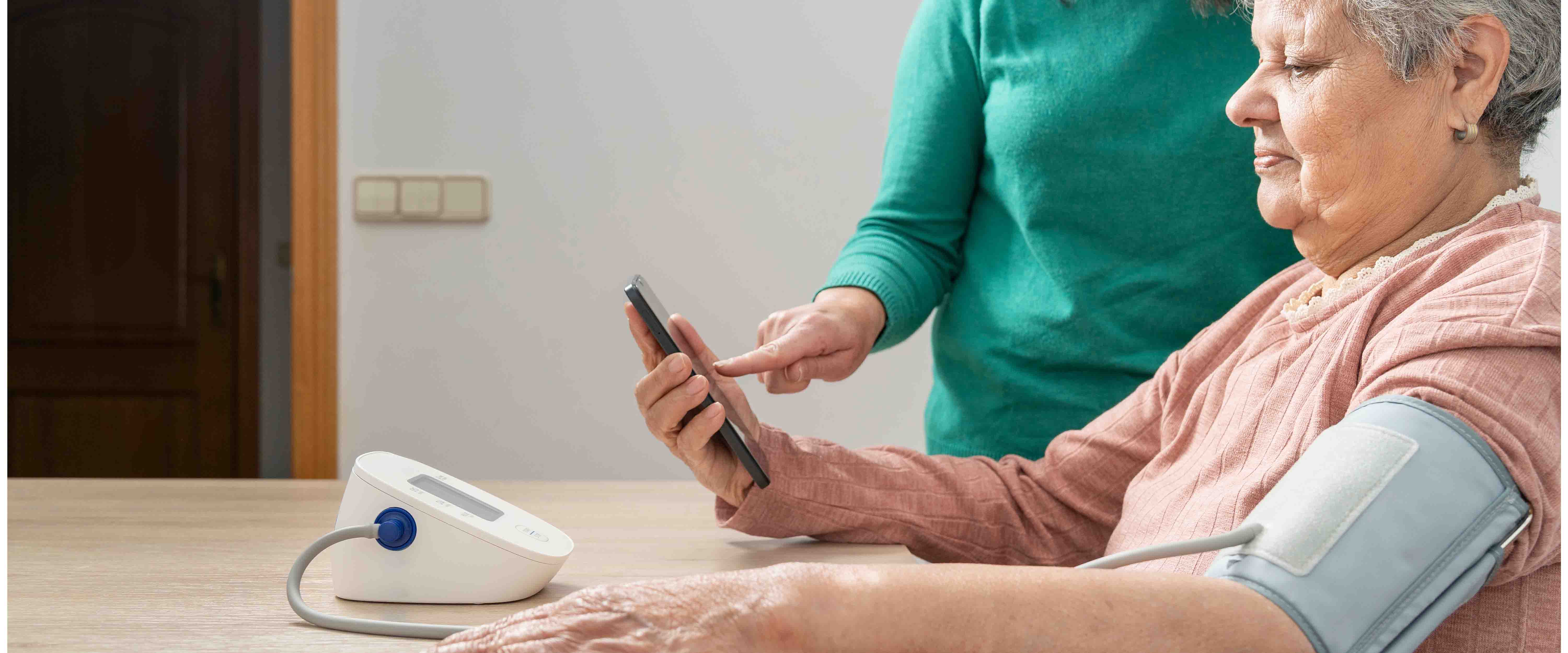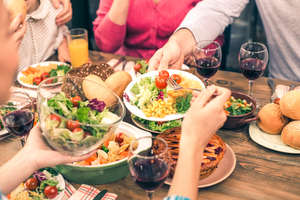Your guide to finding low GI foods to keep your blood sugar stable
Harvard Medical School’s Healthbeat explains that the glycemic index (GI) of a food is a measure of how a specific food with carbohydrates causes blood sugar to rise. It is given as a number compared to the effect on your blood sugar of eating either glucose (a type of sugar) or white bread, according to research published in the journal Diabetes Care.
When you eat a food or beverage containing carbohydrates, your body breaks down the carbs into a type of sugar called glucose. The glucose goes into your bloodstream and causes your blood glucose (blood sugar) levels to rise, according to the Centers for Disease Control and Prevention.
Compared to low-glycemic foods, high-glycemic foods lead to a quicker and greater spike in blood sugar levels. These spikes are considered unhealthy for a few reasons.
- They raise your average blood glucose levels
- They place a higher demand for insulin on your body
- They lead to more dramatic dips in blood glucose after the spike, potentially causing hunger, carbohydrate cravings, and weakness
A low-GI diet and meal plan can help you avoid the blood sugar roller coaster, but the GI is not on the nutrition label of most foods. Instead, you will probably to look at a list of the GI of foods.
Low-GI foods are often less processed, and higher in protein, fiber, fat, and/or complex rather than refined carbohydrates.
According to the Linus Pauling Institute, following are several low-glycemic foods:
Low GI Food List

Low-Glycemic Fruit
- Apples
- Dried apricots
- Under-ripe banana
- Peaches
- Strawberries
- Oranges
- Cherries
- Coconut
- Cranberries
- Blueberries
- Pears
- Plums
- Grapefruit
Many people believe that they should avoid eating fruit because of its sugar, but fruits are among the healthiest foods you can eat. They not only have nutrients such as fiber, potassium, and a range of antioxidants, but are linked to lower risk for many diseases.

Low-Glycemic Vegetables
- Carrots
- Green peas
- Onions
- Lettuce
- Greens (spinach, kale, collards, beet)
- Green beans
- Tomatoes
- Cucumbers
- Bok choy
- Mushrooms
- Artichokes
- Brussels sprouts
- Cabbage
- Broccoli
- Cauliflower
- Celery
- Eggplant
- Peppers (bell peppers, jalapenos, serrano, etc.)
- Zucchini and crookneck squash
- Snow peas
Glycemic Index, Weight Loss, and Health
Can a low-GI diet help you lose weight? Yes, but only if you are careful. Any diet can help you lose weight if you use it to limit calories.
To lose weight on a low-GI diet:
- Choose healthy, filling low-GI carbs, such as vegetables, beans, low-fat dairy, berries, and whole grains.
- Include lean proteins, such as tofu, chicken, fish, and eggs, and healthy fats, such as nuts, avocados, and olive oil.
- Include nutritious “no-GI” foods (lean proteins and healthy fats).
- Limit low-nutrition high-GI foods such as sweets, sugary beverages, and refined starches. Beware of low-GI foods that are high-calorie and low-nutrition, such as pizza and ice cream.

Low-Glycemic Grains
- Barley
- Whole wheat kernels
- All-bran and Fiber One cereals
- Oat bran and rice bran cereals
- Whole grain pasta
- Lasagna with meat and/or cheese, ravioli, tortellini, and other stuffed pasta
- Whole-grain pumpernickel bread
- Sourdough bread
- Wheat tortilla

Low-Glycemic Dairy Products and Dairy-Substitute Products
- Skim, low-fat, and whole milk
- Plain yogurt
- Cheese (cheddar, swiss, mozzarella, brie, feta, blue, goat, etc.)
- Cottage cheese
- Ricotta cheese
- Soy milk and yogurt

Low-Glycemic Legumes
- Beans (chickpeas, kidney beans, pinto beans, black beans, navy beans, etc.)
- Lima beans
- Split peas, black-eyed peas
- Lentils
- Edamame and roasted soybeans
- Hummus
- Bean dip
- Tofu and soy-based meat substitutes
Guessing the Glycemic Index
What if you do not know the glycemic index of a food? That could happen if food has not have been measured or if you do not have time to check its GI before you eat it.
You cannot know for sure, but the GI tends to be lower when:
- It is less processed. Whole grains are often lower-GI than refined, whole fruit is lower-GI than fruit juice, and raw carrots are lower-GI than cooked.
- It is higher in fiber, protein, and/or fat, and lower in sugar and refined starch.
- It is raw. For example, raw carrots are lower-GI than cooked, and al dente pasta is lower-GI than well-cooked.
- Ripeness. A soft, ripe banana has a higher-GI than a firmer, less ripe one.
When you cannot get the GI for a food, going with your gut is usually a smart choice. You cannot go wrong when you eat foods that you know are healthy, limit junk food, and keep portions in check.

Low-Glycemic Nuts and Seeds
- Peanuts
- Nuts (walnuts, macadamias, hazelnuts, almonds, cashews, etc.)
- Peanut butter
- Nut butter
- Seeds (pumpkin, sunflower, chia, flax, etc.)

Other/Mixed Foods
- Dark chocolate and 100% (unsweetened) chocolate
- Chili with beans
- Sandwich on whole-grain bread with meat/tuna/cheese and vegetables
- Peanut butter sandwich on whole-grain bread
- Burrito with beans, cheese, guacamole, salsa, and lettuce on whole-wheat tortilla
- Soups with protein and vegetables
- Salads with vegetables and beans, cheese, chicken, tuna, dressing, and/or nuts
Low-Glycemic, Less-Nutritious (Limit These)
- Snickers bar
- Pizza
- Tacos
- Banana bread
- Muffins
- Egg rolls
Medium/High-Glycemic Nutritious Foods (Enjoy in Moderation)
- Sweet potatoes
- Whole-grain bread
- Butternut, acorn, and other winter squash
- Oatmeal
- Shredded wheat and many whole-grain breakfast cereals (choose unsweetened)
- Brown rice (avoid white rice)
- Melon
High-GI foods are often more refined, cooked, or otherwise processed, higher in simple sugars and/or refined starches, and lower in protein, fiber, and fat.

Carb-Free and Very Low-Carb Foods (Very Low GI)
- Chicken, turkey, and other poultry
- Eggs and egg whites
- Fish and shellfish
- Beef, pork, and other meat
- Olive oil, canola oil, and other oils
- Butter, shortening, and lard
- Mayonnaise
- Olives
- Avocado
The Glycemic Diet
The glycemic diet is, as it sounds, a diet based on the GI. Following a low GI diet means that when you eat foods with carbohydrates, you select those foods with a low GI. There are several potential benefits of a low GI diet.
- Weight loss: When you choose lower-GI foods, you may be getting more fiber, fat, and protein compared to fast-acting carbs such as sugars and refined starches. The result may be that you feel full for longer after you eat, so you tend to eat less at your next meal. That can help you lose weight.
- Better energy: A lower-GI diet means fewer and less dramatic spikes in blood sugar. At the same time, you do not get the subsequent dramatic drops in blood sugar and energy levels. This means your energy levels are more stable, and you may feel better.
- Lower blood sugar: Your blood sugar does not spike as much, and the response demands less insulin, when you choose low-GI foods. Better blood sugar control is especially good news if you have prediabetes or diabetes.
- Cardiovascular benefits: Lower-glycemic carbs tend to have more heart-healthy nutrients, such as fiber, which lowers cholesterol, and potassium, which lowers blood pressure. Plus, limiting simple sugars may help keep blood triglycerides in check.
Following a Low-Glycemic Diet with Lark
Following a low-glycemic diet may seem challenging if you have to look up the GI of each food you eat, but help is available. In addition to using apps that can tell you the GI of foods, you can use Lark Health Coach as another aid. Lark guides you to naturally choosing lower-GI foods and meals by:
- Encouraging whole, less processed foods.
- Supporting high-fiber carbohydrate foods.
- Assisting you with portion control, especially of high-carb foods.
- Reminding you to include GI-lowering nutrients, such as healthy fats and lean proteins, in your meals and snacks.
Looking for the best prediabetes diet?



.jpg)








.webp)





-images-0.jpg)


